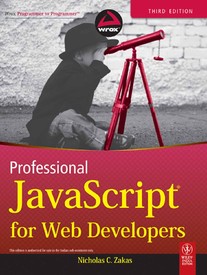 Objects in JavaScript are first class types that have become a critical component to modern front-end web development. The “for…in” statement allows you to fully examine any object at run-time<
Objects in JavaScript are first class types that have become a critical component to modern front-end web development. The “for…in” statement allows you to fully examine any object at run-time<
Making objects, instantiating objects, and enjoying all the wonderful properties and methods that we baked into our objects is what advanced JavaScript is all about these days. Let’s face it… it’s hard to imagine a useful JavaScript-based application that does not, in some way, implement object oriented technology. The “for…in” statement is one of the most essential tools in our belt when it comes to introspection in JavaScript.
“Introspection” in JavaScript is the act of “looking into” an object, to discover what it has inside. The answer is: “properties and methods.” But, the thing is, you don’t always know the name of the object that you will want to “look into” or exactly when you will have to do it. Also, as we know, an object member can itself be an object, which has properties and methods, and one or more of those properties might be another object with its own properties and methods… or a method might return an object, that has properties and methods…. and so on.
So, add this all up and what you get is the need to “look into” an object without knowing anything about it. It may be an object that you did not create, so our introspection tool cannot look for a specific set of named members; it just has to be able to say: “the object that you told me to look into contains the following properties and methods,” and based on the object that we fed to that tool, the answer can vary.
The JavaScript “for…in” loop is incredibly simple and equally powerful. With its basic syntax, we can easily say: “for each X in Y… do this…”. X is the object’s property and Y is the object. So, if I had an object named “foo”, I could say “for X in foo”. If foo had 5 properties, then the loop would run 5 times. In each iteration of the loop, “X” will represent the current property that is being “looked at”. To access the property name, simply refer to X (i.e. alert(x) ), and to access the property value, refer to object[x] (i.e. alert(foo[x]) ). The reason that we use the bracket notation, and not dot notation, is that dot notation requires a string literal (i.e. foo.name), whereas with bracket notation, we can place any valid expression inside the brackets, such as a variable (e.g. foo[X] ).
Now what follows this is the “loop”, which is a set of curly brackets. So, our syntax looks as follows:
|
|
for (var X in foo){ //this is "the loop" } |
Inside “the loop”, we can do whatever we like. Typical scenarios are to do something with either the property name (i.e. X) or the property value (i.e, foo[X]). Let’s look at an example of a JavaScript “for in” loop that does something.
Example # 1
|
|
var foo = { color: "blue", name: "fred", say: function(){ return "this is the say function" } }; for (var prop in foo){ console.log("the value of " + prop + ", is: " + foo[prop] ); } |
The output for Example # 1 would be:
the value of color, is: blue
the value of name, is: fred
the value of say, is: function (){ return “this is the say function” }
In Example # 1, the object “foo” has three members: two properties and one method. So, the “loop” executes three times. In each case, we output the name of the member “prop” and the value of the member “foo[prop]”.
Hmmm… ok, but what if one of the members is a function? Can’t we do more than just output what the name of the function is?
Sure! Functions are meant to be executed, so let’s execute a function if we find one!
Example # 2
|
|
var foo = { color: "blue", name: "fred", say: function(){ return "hello from is the say function" } }; for (var prop in foo){ if (typeof foo[prop] === "function") { var func = foo[prop]; console.log("we found a function, and here it comes: " + func() ); } else { console.log("the value of " + prop + ", is: " + foo[prop] ); } } |
In Example # 2, we examine each property courtesy of the “typeof” operator. If the property currently being “looked at” is a function, we assign the value of the property (the actual function code) to a variable, and then execute that variable. The output of Exmple # 2 is:
the value of color, is: blue
the value of name, is: fred
we found a function, and here it comes: hello from is the say function
Summary
So, as you can see, the sky is pretty much the limit with regard to the JavaScript for…in statement. It’s a very powerful introspection tool, i.e., one that gives us the ability to examine the properties and methods that an object contains. The reason that this statement is so important is that you may not always know the name of the object that you want to “look into” or much about it at all. This means that the JavaScript for…in statement allows you to abstract away the details of the future object that you will want to examine, and just say: “whatever object I reference, find out what is inside that object and tell me all about it!”
Helpful links for the JavaScript “for…in” statement
http://www.w3schools.com/js/js_loop_for_in.asp
http://javascriptweblog.wordpress.com/2011/01/04/exploring-javascript-for-in-loops/
http://msdn.microsoft.com/en-us/library/55wb2d34(v=vs.94).aspx

 The JavaScript indexOf() method allows you to find out if a string contains one or more characters, and if so, the starting position of that set of characters
The JavaScript indexOf() method allows you to find out if a string contains one or more characters, and if so, the starting position of that set of characters
 This video player makes it simple to present video in your HTML page, and configure a wide array of options
This video player makes it simple to present video in your HTML page, and configure a wide array of options
 There is no need to tightly couple a function and the other function that might call it, by sweating the details of the arguments passed in. You can access the local “arguments” variable, examine it, and decide how to handle the situation
There is no need to tightly couple a function and the other function that might call it, by sweating the details of the arguments passed in. You can access the local “arguments” variable, examine it, and decide how to handle the situation You can chain jQuery methods in a way that makes your code more readable, and allows you to be more expressive in the way that you traverse and manipulate DOM elements
You can chain jQuery methods in a way that makes your code more readable, and allows you to be more expressive in the way that you traverse and manipulate DOM elements Even at nearly 3 years old, this book is surprisingly relevant and more importantly, it is an excellent resource for Front-End Web Developers
Even at nearly 3 years old, this book is surprisingly relevant and more importantly, it is an excellent resource for Front-End Web Developers